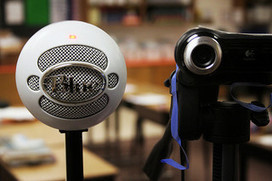Definition of Health 2.0 and Medicine 2.0: A Systematic Review
ABSTRACT
Background: During the last decade, the Internet has become increasingly popular and is now an important part of our daily life. When new “Web 2.0” technologies are used in health care, the terms “Health 2.0" or "Medicine 2.0” may be used.
Objective: The objective was to identify unique definitions of Health 2.0/Medicine 2.0 and recurrent topics within the definitions.
Methods: A systematic literature review of electronic databases (PubMed, Scopus, CINAHL) and gray literature on the Internet using the search engines Google, Bing, and Yahoo was performed to find unique definitions of Health 2.0/Medicine 2.0. We assessed all literature, extracted unique definitions, and selected recurrent topics by using the constant comparison method.
Results: We found a total of 1937 articles, 533 in scientific databases and 1404 in the gray literature. We selected 46 unique definitions for further analysis and identified 7 main topics.
Conclusions: Health 2.0/Medicine 2.0 are still developing areas. Many articles concerning this subject were found, primarily on the Internet. However, there is still no general consensus regarding the definition of Health 2.0/Medicine 2.0. We hope that this study will contribute to building the concept of Health 2.0/Medicine 2.0 and facilitate discussion and further research.
(J Med Internet Res 2010;12(2):e18)
During the last decade, the Internet has become increasingly popular and now forms an important part of our daily life [1]. In the Netherlands, the Internet is even more popular than traditional media like television, radio, and newspapers [2]. Furthermore, the impact of the Internet and other technological developments on health care is expected to increase [3,4]. Patients are using search engines like Google and Bing to find health related information. In Google, five percent of all searches are health related [5]. Patients can express their feelings on weblogs and online forums [3], and patients and professionals can use the Internet to improve communication and the sharing of information on websites such as Curetogether [6] and the Dutch website, Artsennet [7] for medical professionals. The use of Internet or Web technology in health care is called eHealth [1,8].
In 2004 the term “Web 2.0” was introduced. O’Reilly defined Web 2.0 as “a set of economic, social, and technology trends that collectively form the basis for the next generation of the Internet, a more mature, distinctive medium characterized by user participation, openness, and network effects” [9]. Although there are different definitions, most have several aspects in common. Hansen defined Web 2.0 as “a term which refers to improved communication and collaboration between people via social networking” [10]. According to both definitions, the main difference between Web 1.0 (the first generation of the Internet) and Web 2.0 is interaction [11]. Web 1.0 was mostly unidirectional, whereas Web 2.0 allows the user to add information or content to the Web, thus creating interaction. This is why the amount of “user-generated content” has increased enormously [12]. Practical examples of user-generated content are online communities where users can participate and share content. Examples are YouTube, Flickr, Facebook, and microblogging such as Twitter. Twitter, for example, improves communication and the sharing of information among health care professionals [13]....
Via rob halkes



 Your new post is loading...
Your new post is loading...











Review!